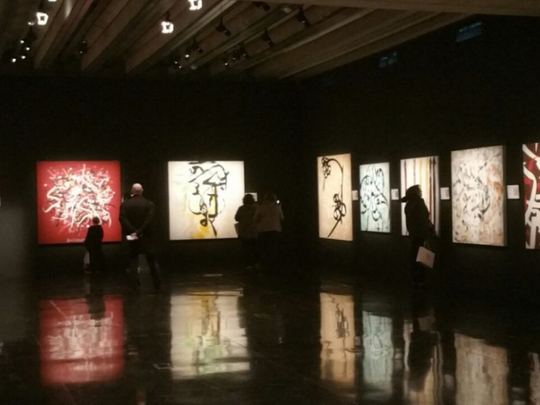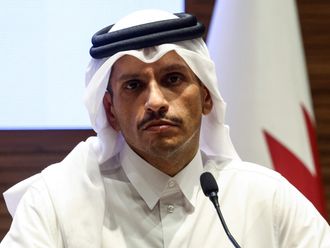
Manama: An Arabic calligraphy exhibition organised by Qatar’s National Human Rights Committee (NHRC) aims to highlight Islam’s keenness on respect for people’s dignity and human rights.
“The exhibition about human rights in the Islamic culture features creative artworks with verses from the Holy Quran and sayings of Prophet Mohammad (PBUH) that are directly linked to the core messages of the Universal Declaration of Human Rights and the international covenants on human rights,” NHRC Chairman Ali Bin Sumaikh Al Marri said in Tunis where the exhibition is being held.
The calligraphy exhibition was inaugurated on Wednesday by Qatar’s Prime Minister Shaikh Abdullah Bin Nasser Al Thani as he attended, in his capacity as Minister of Interior, the meeting of the Arab interior ministers in the Tunisian capital.
“The paintings stress the values and precepts of Islam as a whole and highlight the close relation between the religion and the rights of all people to live in dignity and freedom. The genuine message of Islam consolidates the values of justice and equality among people and rejects discrimination and oppression under all forms. Islam guaranteed people’s civil, political, economic, social and cultural rights centuries before such values were enacted,” Al Marri said, quoted by Qatar News Agency (QNA).
Fine arts, architecture and the legacy of civilisations have been embraced and preserved by Islam in all the countries. It is based on the belief that cultural and civilisational diversity is a gain for mankind and heritage should never be distorted or destroyed, Al Marri added.
The exhibition was previously held at the United Nations headquarters in Geneva and in the French capital Paris. It was well received on both occasions.
Islam’s call for peaceful coexistence between people, allowed minorities in Islamic countries for more than 14 centuries to live in peace and to practise their rituals freely, Al Marri said.
At the opening of the exhibition in April last year in Paris, the NHRC chairman had said that the paintings were a mean of communication between civilisations that promote peace, moderation and tolerance.
“The attitudes of extremists and terrorist groups that use religion as a cover for their abnormal and sick behaviour and to achieve their despicable goals have no relations whatsoever with Islam and its true message of moderation and tolerance,” Al Marri said.
“Terrorists represent only their fanatical selves. The whole world has witnessed for centuries the bright side of Islam.”
.











